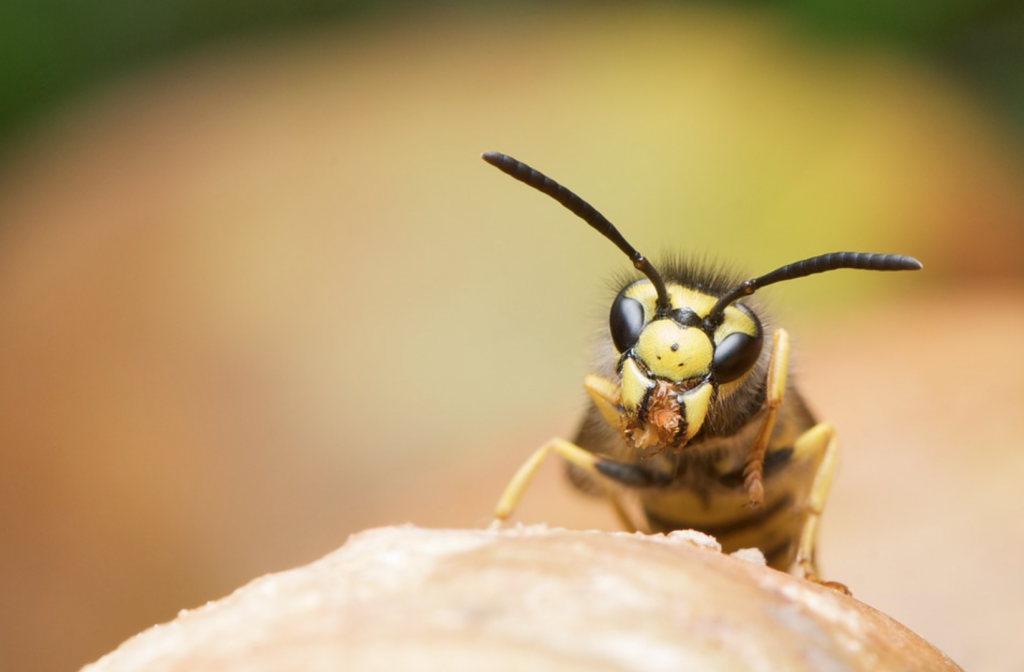
You can see it on a sunny spring or summer day in practically any community garden. Visitors arrive to enjoy the scene, but a few are turned away by the buzzing of bees and wasps. There’s no doubt that these insects have caught a bad rap over the millennia. However, there are some interesting facts that can dispel these concerns.
Bees stings are in fact not that common and allergic reactions are far more rare. Half of the population, male drones, don’t even have stingers. Bumble bees, the most intimidating of the lot due to their size, are far less likely to sting than their cousins. Wasps are considered by many to be even more threatening, but this is often because of their less obvious appearance. Wasps tend to be better concealed in hedges, lawns and home exterior undergrowth, so they are accidently disturbed far more often.
Simply put, in a community garden environment, bees and wasps are not the threat some may think they are. Instead, these insects are beneficial bugs that are not only welcome, but are essential to the health of your community garden.
Why You Want to Invite Bees and Wasps into Your Community Garden Environment
Crop Pollination
Everyone knows that bees make honey. But this sweet commodity is only one portion of their annual crop production. In Canada, recent Agriculture and Agri-Food Canada data shows that the total estimate for the annual contribution of honey bees of $4.39 billion.
Most crops grown for vegetables, including (but not exclusive to) squash, cucumber, tomato, nuts, and seeds require pollination by insects. Complementary crops such as fiber (i.e. cotton) and hay (to feed livestock) require the same. Bees and wasps are expert pollinators. This is because they dedicate most of their life to collecting pollen. Pollen is a source of protein that bees and wasps feed to their offspring. When they carry pollen back to their nest it is also distributed to the crops they passover. Since an individual bee often focuses on one species of plant at a time, it is more likely that pollen from one plant will be transferred to another of the same species. This is known as cross-pollination, a process that is required by crops to produce viable seeds.
Without bees (and wasps), agricultural production would be devastated and the world as we know it would forever change. Consider your own community garden as a sustainable world of its own (it is!) and imagine the implications if there were no bees, or wasps, present.
Controls the Population of Harmful Bugs
While primarily known as pollinators, bees and wasps are also predators. Wasps, not as heralded as bees when it comes to pollination (but are in fact great pollinators) are especially effective in this capacity. They are garden-friendly soldiers that will have crop-destroying insects run for the hills.
Wasps feed on a wide variety of harmful pests. They consume small insects and scavenge dead bugs and larvae from the soil. But the cutworm (a moth caterpillar that resides in the upper layers of the soil and eats through the stems of young plants at ground level) is one of their favorite meals. And that is a good thing for agricultural producers. Cutworms in a farming environment, are a major threat to the health of grain and canola crops. To the rescue, is one of the smallest species of wasp, the tiny parasitic wasp known as the copidosoma bakeri, which devours cutworms by the hoard, and is considered a hero to agricultural producers in Canada.
At a community garden level, wasps can be just as beneficial as bees for their simple fact that they are great gate keepers that keep bad bugs away.
Living Harmoniously with Bees and Wasps
You can see that these beneficial insects are most certainly essential to the health of your community garden and urban farming project. So, how do we coexist with them? The following tips will help:
- Get an annual inspection – Have a local apiarist (beekeeper) perform an annual inspection of your community garden or farm to inspect nests and hives and to ensure a balanced population.
- Keep non-crop based foods, beverages and garbage away – Don’t attract unwanted (non-productive) attention from bees and wasps by allowing visitors to introduce food scraps into the environment.
- Avoid use of cosmetic scents – Save your perfumes, colognes and scented lotions for after you tend to your community garden. These can rile up bees and wasps and attract unwanted attention from them.
- Avoid bright colored clothing – Bees and wasps are also attracted to bright colors. Let them focus their attention on colorful crops by toning down your attire.
The next time you see a bee or wasp buzzing around a community garden, think twice about swatting them away and instead give them a pat on the back, proverbially of course.
Thanks to our friends from Fix.com especially @EmilyNeil_MSVU who shared this lovely infographic; you can view more on how to coexist with bees and wasps below.

Source: Fix.com Blog








